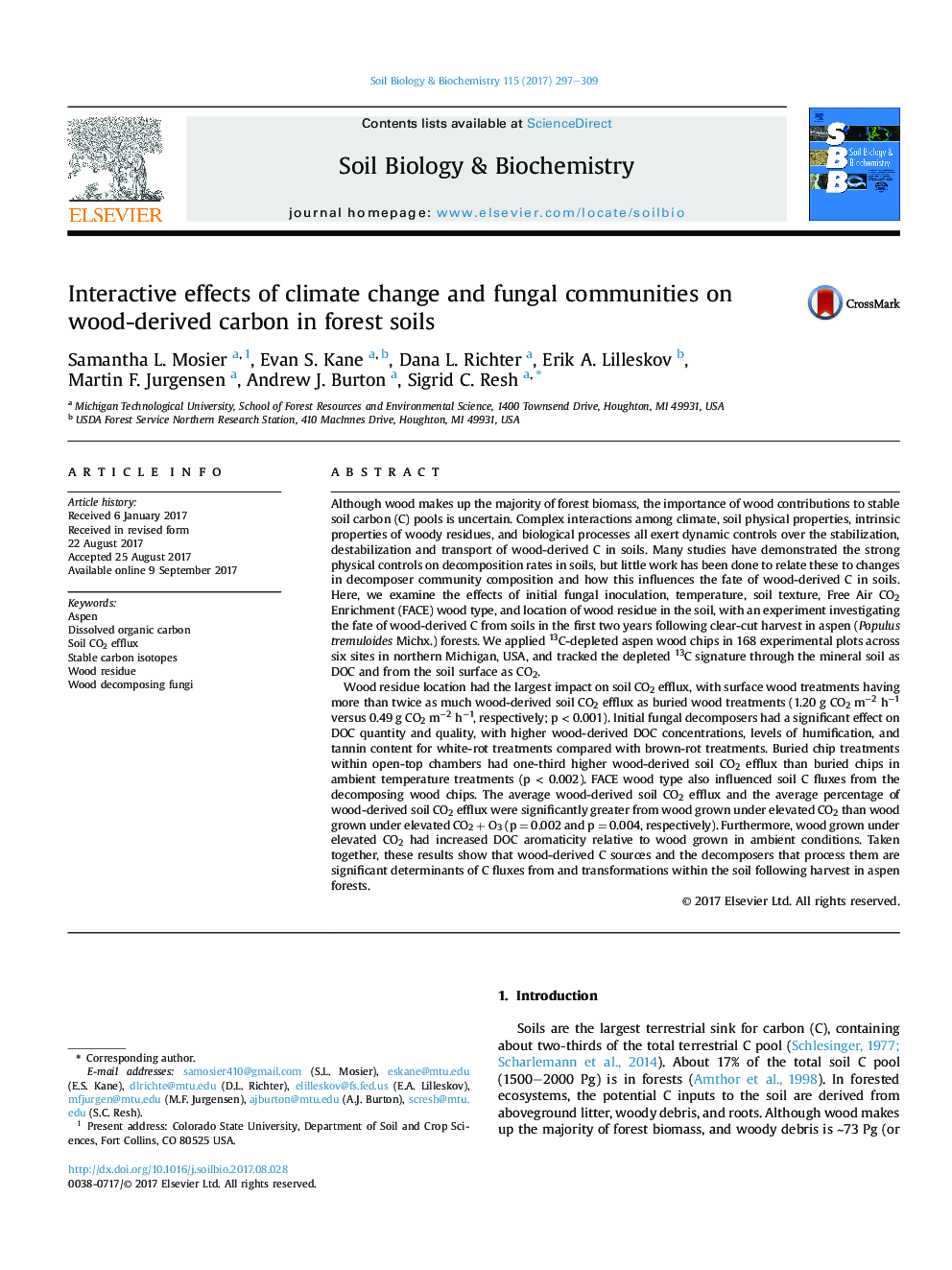| Article ID | Journal | Published Year | Pages | File Type |
|---|---|---|---|---|
| 5516251 | Soil Biology and Biochemistry | 2017 | 13 Pages |
â¢13C of labelled wood was followed in soil DOC and CO2 efflux during decomposition.â¢Surface versus buried wood treatments had twice the wood-derived soil CO2 efflux.â¢White- and natural-rot treatments generated three times more DOC than brown-rot.â¢White- and natural-rots generated the most phenolic rich and humified DOC.â¢+CO2 + O3 wood type had lower soil CO2 efflux rates relative to + CO2 wood type.
Although wood makes up the majority of forest biomass, the importance of wood contributions to stable soil carbon (C) pools is uncertain. Complex interactions among climate, soil physical properties, intrinsic properties of woody residues, and biological processes all exert dynamic controls over the stabilization, destabilization and transport of wood-derived C in soils. Many studies have demonstrated the strong physical controls on decomposition rates in soils, but little work has been done to relate these to changes in decomposer community composition and how this influences the fate of wood-derived C in soils. Here, we examine the effects of initial fungal inoculation, temperature, soil texture, Free Air CO2 Enrichment (FACE) wood type, and location of wood residue in the soil, with an experiment investigating the fate of wood-derived C from soils in the first two years following clear-cut harvest in aspen (Populus tremuloides Michx.) forests. We applied 13C-depleted aspen wood chips in 168 experimental plots across six sites in northern Michigan, USA, and tracked the depleted 13C signature through the mineral soil as DOC and from the soil surface as CO2.Wood residue location had the largest impact on soil CO2 efflux, with surface wood treatments having more than twice as much wood-derived soil CO2 efflux as buried wood treatments (1.20 g CO2 mâ2 hâ1 versus 0.49 g CO2 mâ2 hâ1, respectively; p < 0.001). Initial fungal decomposers had a significant effect on DOC quantity and quality, with higher wood-derived DOC concentrations, levels of humification, and tannin content for white-rot treatments compared with brown-rot treatments. Buried chip treatments within open-top chambers had one-third higher wood-derived soil CO2 efflux than buried chips in ambient temperature treatments (p < 0.002). FACE wood type also influenced soil C fluxes from the decomposing wood chips. The average wood-derived soil CO2 efflux and the average percentage of wood-derived soil CO2 efflux were significantly greater from wood grown under elevated CO2 than wood grown under elevated CO2 + O3 (p = 0.002 and p = 0.004, respectively). Furthermore, wood grown under elevated CO2 had increased DOC aromaticity relative to wood grown in ambient conditions. Taken together, these results show that wood-derived C sources and the decomposers that process them are significant determinants of C fluxes from and transformations within the soil following harvest in aspen forests.
